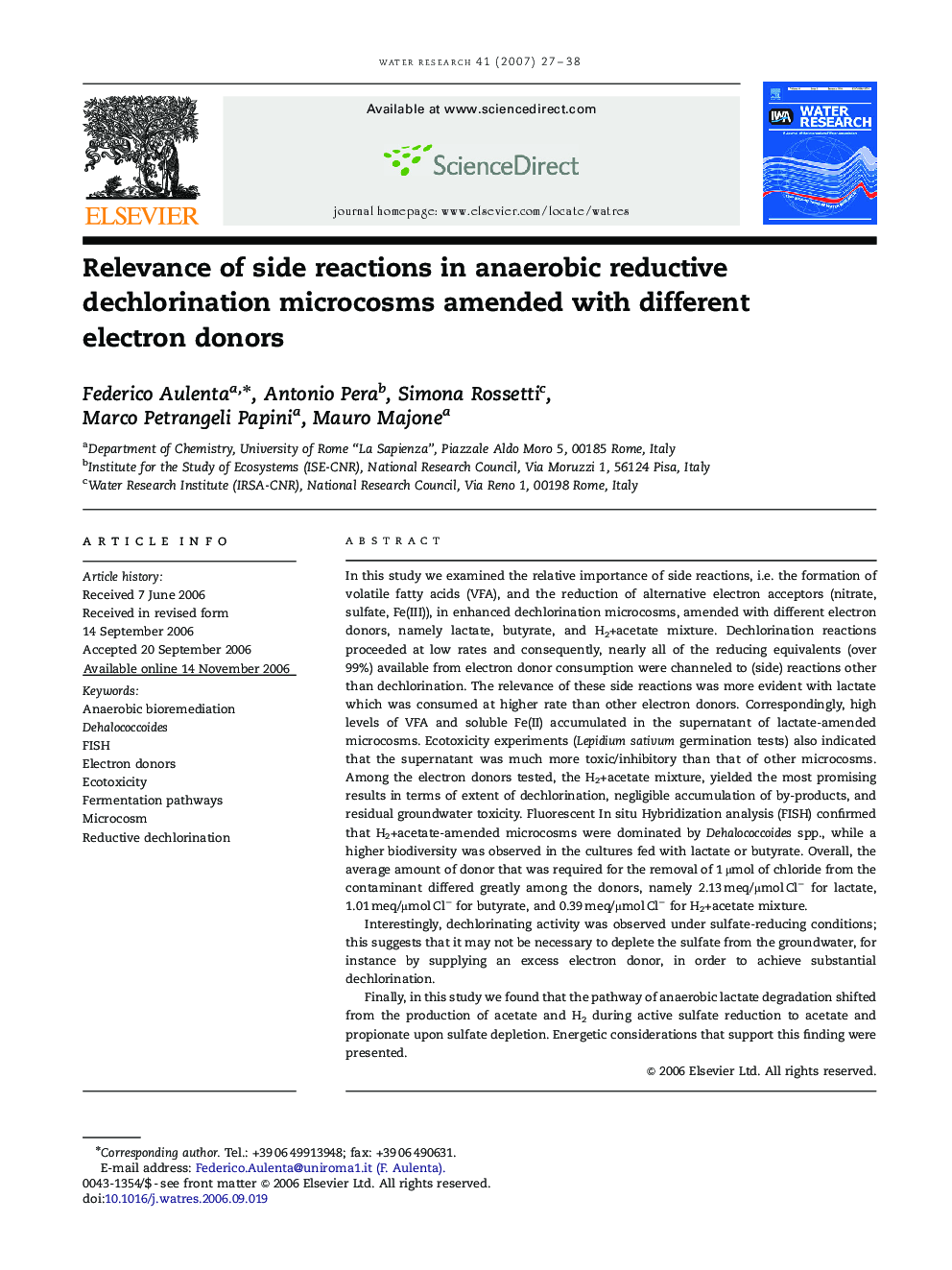| کد مقاله | کد نشریه | سال انتشار | مقاله انگلیسی | نسخه تمام متن |
|---|---|---|---|---|
| 4485656 | 1316961 | 2007 | 12 صفحه PDF | دانلود رایگان |

In this study we examined the relative importance of side reactions, i.e. the formation of volatile fatty acids (VFA), and the reduction of alternative electron acceptors (nitrate, sulfate, Fe(III)), in enhanced dechlorination microcosms, amended with different electron donors, namely lactate, butyrate, and H2+acetate mixture. Dechlorination reactions proceeded at low rates and consequently, nearly all of the reducing equivalents (over 99%) available from electron donor consumption were channeled to (side) reactions other than dechlorination. The relevance of these side reactions was more evident with lactate which was consumed at higher rate than other electron donors. Correspondingly, high levels of VFA and soluble Fe(II) accumulated in the supernatant of lactate-amended microcosms. Ecotoxicity experiments (Lepidium sativum germination tests) also indicated that the supernatant was much more toxic/inhibitory than that of other microcosms. Among the electron donors tested, the H2+acetate mixture, yielded the most promising results in terms of extent of dechlorination, negligible accumulation of by-products, and residual groundwater toxicity. Fluorescent In situ Hybridization analysis (FISH) confirmed that H2+acetate-amended microcosms were dominated by Dehalococcoides spp., while a higher biodiversity was observed in the cultures fed with lactate or butyrate. Overall, the average amount of donor that was required for the removal of 1 μmol of chloride from the contaminant differed greatly among the donors, namely 2.13 meq/μmol Cl− for lactate, 1.01 meq/μmol Cl− for butyrate, and 0.39 meq/μmol Cl− for H2+acetate mixture.Interestingly, dechlorinating activity was observed under sulfate-reducing conditions; this suggests that it may not be necessary to deplete the sulfate from the groundwater, for instance by supplying an excess electron donor, in order to achieve substantial dechlorination.Finally, in this study we found that the pathway of anaerobic lactate degradation shifted from the production of acetate and H2 during active sulfate reduction to acetate and propionate upon sulfate depletion. Energetic considerations that support this finding were presented.
Journal: Water Research - Volume 41, Issue 1, January 2007, Pages 27–38